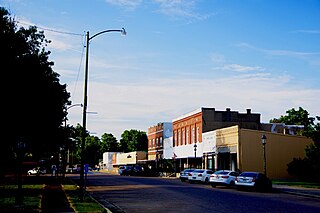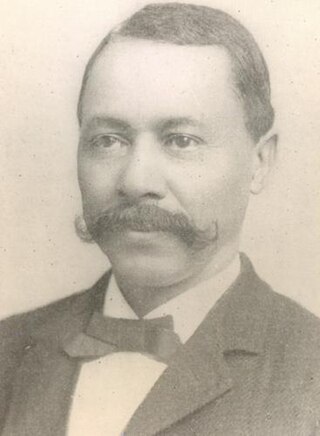Hayti is the archaic spelling of the name of the country Haiti, or an archaic name for the island of Hispaniola.
Hayti may also refer to the following places in the United States:
Hayti is the archaic spelling of the name of the country Haiti, or an archaic name for the island of Hispaniola.
Hayti may also refer to the following places in the United States:
Saint Louis, Saint-Louis or St. Louis commonly refers to:
Newark most commonly refers to:
Phaeton, Phaethon, Foeton, or Foethon may refer to:

Pemiscot County is a county located in the southeastern corner in the Bootheel in the U.S. state of Missouri, with the Mississippi River forming its eastern border. As of the 2020 census, the population was 15,661. The largest city and county seat is Caruthersville. The county was officially organized on February 19, 1851. It is named for the local bayou, taken from the word pem-eskaw, meaning "liquid mud", in the language of the native Meskwaki people. This has been an area of cotton plantations and later other commodity crops.

Hayti is a city in eastern Pemiscot County, Missouri, United States. The population was 2,493 at the 2020 census.

Hayti Heights is a city in eastern Pemiscot County in the bootheel of southeast Missouri, United States. The population was 515 at the 2020 census.
A quarter is one-fourth, 1⁄4, 25%, or 0.25.
Boyd may refer to:
Haitian language may refer to:
Helm may refer to:
Sir Spenser Buckingham St. John was British Consul in Brunei in the mid 19th century.

Ebenezer Don Carlos Bassett was United States Ambassador to Haiti from 1869 to 1877. He was the first African American diplomat and the fourth U.S. ambassador to Haiti since the two countries established relations in 1862. His mother was Pequot. From 1857 to 1869 he was the principal of the Institute for Colored Youth in Philadelphia.
Haiti is a Caribbean country roughly three-eighths of the island of Hispaniola and includes many small islands.

The Palace of Sans-Souci, or Sans-Souci Palace, was the principal royal residence of Henry I, King of Haiti, better known as Henri Christophe. It is located in the town of Milot, approximately five kilometres (3 mi) northeast of the Citadelle Laferrière, and thirteen kilometres (8 mi) southwest of the Three Bays Protected Area. Being among the first buildings constructed in a free Haiti after the Haitian Revolution, the Palace and the neighboring Citadelle, are Haitian icons and global symbols of liberty, and were inscribed on the World Heritage List in 1982.
Granger may refer to:

Route 84 is a state highway in the Missouri bootheel. The route starts at Arkansas Highway 90 over the St. Francis River on the Arkansas–Missouri state line. The road travels eastward to Kennett, where it becomes concurrent with U.S. Route 412. East of Kennett, the concurrent routes travel eastward on a divided highway to Hayti Heights, where the concurrency ends. Route 84 travels through Hayti Heights and Hayti, and it crosses Interstate 55 (I-55) and US 61. The route then travels southeastwards to Caruthersville, and bypasses the central area of the city. In the southern part of Caruthersville, Route 84 ends at an interchange with I-155 and US 412.

James Redpath was an American journalist and anti-slavery activist.
Dumas may refer to:
Hayti Township is an inactive township in Pemiscot County, in the U.S. state of Missouri.

The Indigenous Army, also known as the Army of Saint-Domingue was the name bestowed to the coalition of anti-slavery men and women who fought in the Haitian Revolution in Saint-Domingue. Encompassing both black slaves, maroons, and affranchis, the rebels were not officially titled the Armée indigène until January 1803, under the leadership of then-general Jean-Jacques Dessalines. Predated by insurrectionists such as François Mackandal, Vincent Ogé and Dutty Boukman, Toussaint Louverture, succeeded by Dessalines, led, organized, and consolidated the rebellion. The now full-fledged fighting force utilized its manpower advantage and strategic capacity to overwhelm French troops, ensuring the Haitian Revolution was the most successful of its kind.